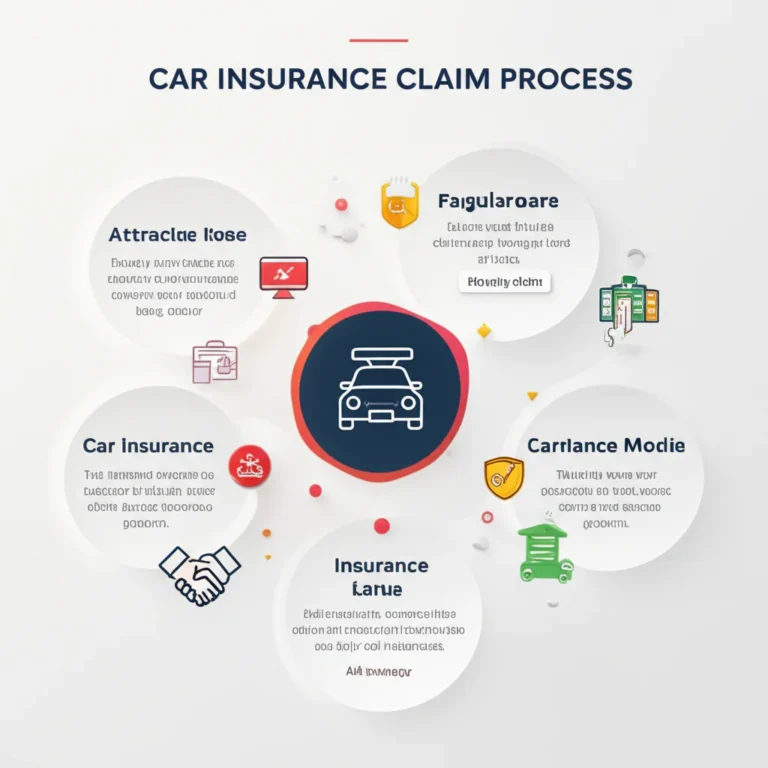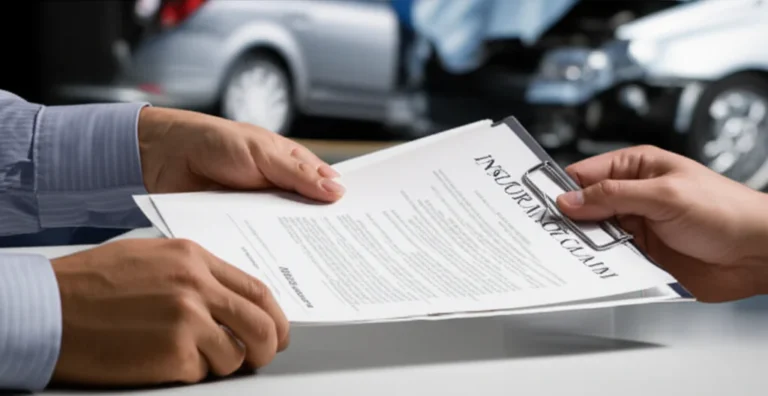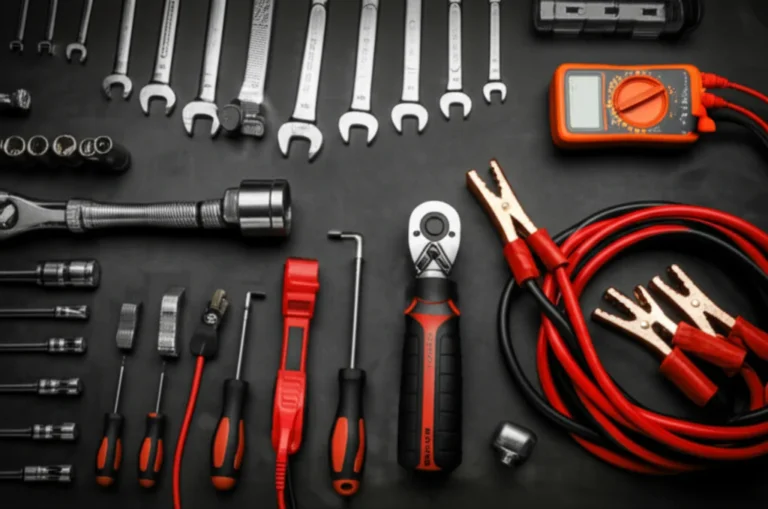Support our educational content for free when you purchase through links on our site. Learn more
Are Car Repairs Covered Under Warranty? 10 Things to Know in 2025 🔧
Ever wondered if that mysterious clunk or sudden engine hiccup is something your car’s warranty will actually cover—or if you’re about to get hit with a surprise repair bill? You’re not alone. Many drivers assume warranties are catch-alls, but the truth is a bit more nuanced. From engine failures to worn brake pads, knowing what repairs are covered and how to check if your warranty is still active can save you thousands of dollars and a ton of frustration.
Take Maria’s story: her transmission failed just after the bumper-to-bumper warranty expired, but thanks to her powertrain coverage, she walked away with zero repair costs. On the flip side, Tom’s turbocharger blew up after he installed aftermarket parts—and his warranty claim was denied. Curious how to avoid Tom’s fate and make sure your warranty works for you? We’ve got you covered with 10 essential insights that every car owner must know in 2025.
Key Takeaways
- Factory warranties cover defects in materials and workmanship, not routine maintenance or wear items.
- Use your VIN and manufacturer websites to quickly check if your warranty is still valid.
- Bumper-to-bumper and powertrain warranties cover different parts and last different lengths of time.
- Keep detailed maintenance records and follow the manufacturer’s service schedule to avoid claim denials.
- Aftermarket modifications can jeopardize warranty claims if they cause damage, so proceed with caution.
- Extended warranties differ from factory warranties and should be evaluated carefully before purchase.
- If a claim is denied, escalate through dealership management or manufacturer customer service, and know your state’s Lemon Laws.
Ready to protect your ride?
- 👉 Shop Hyundai warranties: TrueCar | Hyundai Official Website
- Explore Ford Protect plans: Edmunds | Ford Official Website
- Compare extended warranties: Endurance | CarShield | CARCHEX
Table of Contents
- ⚡️ Quick Tips and Facts About Car Warranty Repairs
- 🔧 Understanding Car Warranty Coverage: What Repairs Are Included?
- 🕰️ How to Check If Your Car Is Still Under Warranty
- 1️⃣ Top 10 Common Car Repairs Typically Covered Under Warranty
- 2️⃣ Repairs Usually NOT Covered by Car Warranties: What to Watch Out For
- 📋 Decoding Your Warranty Contract: Key Terms and Conditions Explained
- 🛠️ How to File a Warranty Claim: Step-by-Step Guide
- 🚗 Manufacturer vs. Extended Warranties: What’s the Difference?
- 🔍 Real-Life Stories: When Warranties Saved the Day (and When They Didn’t)
- 📅 Warranty Expiration and Mileage Limits: What You Need to Know
- 💡 Tips to Maximize Your Warranty Benefits and Avoid Denials
- ⚠️ Common Warranty Myths Debunked: Don’t Get Fooled!
- 🔗 Recommended Links for Warranty Information and Support
- ❓ Frequently Asked Questions About Car Warranty Repairs
- 📚 Reference Links and Resources for Further Reading
- 🏁 Conclusion: Navigating Your Car Warranty Like a Pro
Body
Here at Car Brands™, we’ve spent countless hours under the hoods of cars, deciphering the fine print of warranty booklets, and, yes, occasionally arguing with service managers. We know that a car warranty can feel like a magical shield protecting your wallet… until it suddenly isn’t. So, what gives? Are there really car repairs that are covered under warranty, and how in the world do you know if that shield is still active?
Let’s pop the hood on this topic and get you the answers you need, with some real-world advice from our team of gearheads.
⚡️ Quick Tips and Facts About Car Warranty Repairs
In a hurry? Here’s the low-down on car warranties.
- What’s a Warranty? Think of it as a promise from the manufacturer to fix defects in materials or workmanship for a set period. It’s not a catch-all for anything that breaks.
- Check Your VIN: The fastest way to check your warranty status is often by using your Vehicle Identification Number (VIN) on the manufacturer’s website or with a third-party service like Carfax.
- Two Main Types: You’ll mainly hear about Bumper-to-Bumper (comprehensive coverage for a shorter term) and Powertrain (engine/transmission coverage for a longer term).
- Exclusions are Key: Warranties do not cover routine maintenance (oil changes, brake pads, tires) or damage from accidents, misuse, or environmental factors.
- Keep Your Records: Hold onto all your service records! This is crucial proof that you’ve maintained your vehicle properly, which can prevent a claim denial.
- You Can Use Your Own Mechanic: Thanks to the Magnuson-Moss Warranty Act, you can have routine maintenance done at an independent shop without voiding your warranty. Just make sure they use the proper fluids and parts!
- “Voiding” is Rare: It’s tough to void an entire warranty. Usually, a manufacturer will just deny a specific claim if they can prove an aftermarket part or misuse caused the failure. A salvage title from a major accident, however, will almost certainly void the whole thing.
🔧 Understanding Car Warranty Coverage: What Repairs Are Included?
So, you’ve got a problem with your car. Is it the manufacturer’s problem or yours? It all comes down to the type of warranty you have. A car warranty is essentially a contract where the automaker agrees to pay for specific repairs if a part fails due to a manufacturing defect. It’s not insurance—it won’t cover you if you back into a pole!
Let’s break down the common types of factory warranties that come with a new car.
The Main Flavors of Factory Warranties
| Warranty Type | What It Generally Covers | Typical Duration (whichever comes first) |
|---|---|---|
| Bumper-to-Bumper | The most comprehensive. Covers nearly everything from electrical components to the A/C system. | 3 years / 36,000 miles |
| Powertrain | The heavy hitters: Engine, transmission, and drivetrain components. | 5 years / 60,000 miles (or longer) |
| Corrosion | Protects against rust-through or perforation of the body panels. | 5 years / unlimited miles (varies) |
| Emissions | Federally mandated coverage for critical emissions components like the catalytic converter and ECU. | 2 yrs/24k miles (most parts), 8 yrs/80k miles (major parts) |
Bumper-to-Bumper Warranty: The “Everything” Package (Almost)
This is the big one, also called a “comprehensive” or “limited” warranty. It covers a vast range of parts, from your fancy infotainment screen to the power window motors. But don’t let the name fool you; it doesn’t actually cover the bumpers themselves from damage. More importantly, it excludes a list of “wear and tear” items.
Powertrain Warranty: The Heart and Soul
Once the bumper-to-bumper warranty expires, the powertrain warranty usually continues for a few more years. This is your safety net for the most expensive and critical components of your car—the ones that make it go! If your transmission decides to call it quits due to an internal defect, this is the warranty you’ll be thanking.
Corrosion and Emissions Warranties: The Specialists
The corrosion warranty (or rust/perforation warranty) specifically covers the cost of repairing body panels that have rusted completely through. It typically won’t cover surface rust or rust on the undercarriage.
The emissions warranty is required by federal law and is a lifesaver. It covers repairs to crucial, and often expensive, components that ensure your car meets clean-air standards. The law mandates a “Design and Defect Warranty” covering parts for 2 years/24,000 miles, and “Specified major emission control components” for a generous 8 years/80,000 miles. This includes things like the catalytic converter and the engine control module (ECU).
🕰️ How to Check If Your Car Is Still Under Warranty
Alright, so how do you know if your warranty is still in effect? It’s easier than you think. Here’s a step-by-step guide to finding out.
-
Find Your VIN: Your Vehicle Identification Number (VIN) is the key. This 17-digit code is your car’s unique fingerprint. You can find it:
- On the driver’s side of the dashboard, visible through the windshield.
- On a sticker inside the driver’s side door jamb.
- On your vehicle’s registration and insurance documents.
-
Check the Manufacturer’s Website: Most automakers, like Ford, Honda, and Toyota, have an online portal for owners. You can create an account, enter your VIN, and see all the details about your car’s active warranties.
-
Call a Dealership: This is often the simplest method. Call any authorized dealership for your car’s brand, give them your VIN, and they can look up the warranty status in their system instantly. You don’t have to call the one where you bought the car.
-
Review Your Paperwork: If you still have the original sales documents or the owner’s manual packet, the warranty booklet will be in there. It will state the terms (e.g., 3 years/36,000 miles). You can then compare that to your car’s current age and mileage.
-
Use a Third-Party Service: Services like CARFAX can provide a vehicle history report that includes warranty information, though this usually comes with a fee.
CHECK YOUR VEHICLE’S HISTORY:
- CARFAX: CARFAX Vehicle History Reports
- AutoCheck: AutoCheck Vehicle History Reports
1️⃣ Top 10 Common Car Repairs Typically Covered Under Warranty
While every warranty is different, our experience shows that these are some of the most common (and often expensive) repairs that are generally covered, provided the failure is due to a manufacturing defect.
- Engine and Transmission Failures: The big ones. Internal issues with the engine block, pistons, or transmission gears are prime candidates for powertrain warranty coverage.
- Electrical System Malfunctions: Modern cars are rolling computers. A faulty ECU, buggy infotainment system, or failing power window motors are often covered under the bumper-to-bumper warranty.
- Air Conditioning System Failure: If your A/C stops blowing cold due to a failed compressor or condenser (and not just because it needs a recharge), the bumper-to-bumper warranty should cover it.
- Fuel System Problems: A defective fuel pump or clogged fuel injectors can cause all sorts of performance issues and are typically covered.
- Suspension Components: Issues like prematurely worn-out control arms, struts, or shocks that affect the ride and handling are often included.
- Steering System Repairs: A failing power steering pump or issues with the steering rack are safety-critical and usually covered.
- Cooling System Issues: A defective water pump, radiator, or thermostat that leads to overheating is a common warranty repair.
- Faulty Sensors: A bad oxygen (O2) sensor or mass airflow sensor can trigger that dreaded “Check Engine” light and is often covered by either the bumper-to-bumper or emissions warranty.
- Leaking Gaskets and Seals: Oil leaks from a failed head gasket or transmission seal are messy and should be covered under the powertrain warranty.
- Starter or Alternator Failure: If your car won’t start or hold a charge due to a bad starter or alternator, the bumper-to-bumper warranty is your friend.
2️⃣ Repairs Usually NOT Covered by Car Warranties: What to Watch Out For
This is where many drivers get frustrated. A warranty is not a free maintenance plan. Here’s a list of things you’ll almost always have to pay for out-of-pocket.
- ❌ Routine Maintenance: Oil changes, tire rotations, filter replacements, fluid top-offs.
- ✅ What’s Covered: The defective part itself.
* ❌ **Wear-and-Tear Items:** These are parts designed to wear out with use. This includes **brake pads and rotors**, **tires**, **windshield wipers**, **clutch linings**, and **light bulbs**.
* ✅ **What’s Covered:** A brake caliper that seizes up (a defect), but not the worn-out pads.
* ❌ **Cosmetic Damage:** Scratches, dents, paint chips from road debris, and interior upholstery damage.
* ✅ **What’s Covered:** Paint that is peeling or bubbling due to a factory defect (this can be a tough claim to win, but it happens!).
* ❌ **Damage from Accidents or Misuse:** Any repairs needed due to a collision, theft, vandalism, or using your car in a way it wasn’t intended (like racing or extreme off-roading).
* ✅ **What’s Covered:** A suspension component that fails during normal driving.
* ❌ **Environmental Damage:** Damage from floods, hail, fires, earthquakes, or salt.
* ✅ **What’s Covered:** A body panel that rusts through from the inside out due to a manufacturing flaw (covered by the corrosion warranty).
* ❌ **Aftermarket Modifications:** If you install a performance chip that causes engine damage, the manufacturer will likely deny that claim. The burden is on them to prove the modification caused the failure, but it’s a battle you want to avoid.
📋 Decoding Your Warranty Contract: Key Terms and Conditions Explained
Reading a warranty booklet can feel like studying for a law exam. Let’s translate some of the key terms you’ll encounter.
- Deductible: The amount you may have to pay per repair visit. Most factory warranties have a zero deductible, but many extended warranties do.
- Exclusions: A specific list of parts or situations that are not covered by the warranty. Pay close attention to this section!
- Transferability: This determines if the warranty coverage can be passed to the next owner if you sell the car. Most factory warranties are transferable, which can boost your car’s resale value.
- Voiding the Warranty: This is the big one. An action that completely cancels your warranty coverage. As Edmunds notes, this is rare and usually only happens in extreme cases like a salvage title, odometer fraud, or severe misuse. More often, a specific claim will just be denied.
I remember a buddy of mine, Dave, who bought a used sports car that was still under its factory powertrain warranty. He took it to a track day—just for a “spirited” lap, he said. A week later, his transmission started acting up. The dealership took one look at the tire rubber caked in the wheel wells and the aftermarket exhaust he’d installed and denied the claim, citing “misuse of the vehicle.” They didn’t void his entire warranty, but he was on the hook for a very expensive transmission repair. Lesson learned!
🛠️ How to File a Warranty Claim: Step-by-Step Guide
So, you’ve confirmed your car has a problem and you believe it’s covered. What now? Follow these steps for a smooth claims process.
- Read Your Warranty Booklet: First, double-check that the issue is likely covered. Understanding the terms will help you make your case.
- Gather Your Documents: Get your paperwork in order. You’ll need your VIN, current mileage, and, most importantly, your service records to prove you’ve kept up with maintenance.
- Contact an Authorized Dealership: Schedule a service appointment with a dealership authorized to work on your brand of car. You must give them a chance to diagnose the problem.
- Describe the Problem Clearly: Be specific. Instead of “it’s making a weird noise,” say “there’s a clicking sound from the front left wheel when I turn right at low speeds.” Provide as much detail as possible.
- Authorize Diagnosis, Not Repairs: Tell the service advisor you believe the issue is covered under warranty and you are authorizing them to diagnose the problem to confirm coverage. Do not give them a blank check to start repairs until you have confirmation in writing that it’s a warranty job.
- Stay in Communication: Follow up with the service advisor. They will communicate with the manufacturer’s warranty administrator to get the repair approved.
- What if Your Claim is Denied? If they deny the claim, ask for a detailed reason in writing. If you disagree, you can escalate the issue to the dealership’s service manager, the manufacturer’s corporate customer service line, or even an external arbitrator. In some cases, state “Lemon Laws” may apply if the vehicle has a substantial, unrepairable defect. For example, the New York Used Car Lemon Law gives dealers a “reasonable” chance to fix an issue (three or more attempts) before a consumer may be entitled to a refund.
🚗 Manufacturer vs. Extended Warranties: What’s the Difference?
Once your factory warranty expires, you’ll likely be offered an extended warranty. It’s important to know that these are not technically warranties; they are vehicle service contracts, which are essentially insurance policies against future repairs.
Here’s a quick comparison:
| Feature | Manufacturer’s (Factory) Warranty | Extended Warranty (Service Contract) |
|---|---|---|
| Source | Included with a new car purchase from the automaker. | Purchased separately from the dealer or a third-party company. |
| Cost | Included in the vehicle’s price. | Varies widely based on coverage, vehicle, and provider. |
| Coverage | Covers defects in materials and workmanship. | Covers mechanical breakdowns as specified in the contract. Can be more or less comprehensive. |
| Deductible | Usually $0. | Often has a deductible per repair. |
| Repair Location | Must be done at an authorized dealership. | May allow repairs at a wider network of certified shops. |
Are extended warranties worth it? That’s the million-dollar question. For some, they provide valuable peace of mind against unexpected, costly repairs. For others, the cost of the warranty outweighs the benefits, especially if they never use it. As Progressive notes, it can sometimes be more cost-effective to save for repairs yourself. If you do consider one, we strongly recommend a plan backed by the manufacturer (e.g., Ford Protect or Mopar Vehicle Protection) over a third-party one, as they tend to have a smoother claims process.
👉 Shop for Extended Warranties:
- Endurance: Endurance Warranty Services
- CarShield: CarShield
- CARCHEX: CARCHEX
🔍 Real-Life Stories: When Warranties Saved the Day (and When They Didn’t)
The Win: Maria’s Minivan Miracle
A member of our team, Maria, bought a brand-new minivan. At 40,000 miles—well past the 36,000-mile bumper-to-bumper warranty—the transmission started shifting erratically. Her heart sank, picturing a massive repair bill. But she remembered the van had a 5-year/60,000-mile powertrain warranty. She took it to the dealer, they confirmed a faulty internal component, and the entire transmission was replaced. Her cost: $0. The powertrain warranty saved her from what would have been a repair costing thousands.
The Loss: Tom’s Turbo Troubles
Another friend, Tom, was thrilled with his new turbocharged compact car. He loved the performance so much that he installed an aftermarket cold air intake and a “stage 1” engine tune to get a little more power. At 20,000 miles, the turbo failed. The dealership’s technician noted the modifications and the manufacturer denied the warranty claim, stating the tune likely caused the turbo to over-boost and fail. Even though Tom argued the parts were high-quality, he couldn’t prove they didn’t cause the failure. He had to pay for a new turbo himself. It was a painful lesson in the “pay to play” world of car modifications.
📅 Warranty Expiration and Mileage Limits: What You Need to Know
All factory warranties come with a time and mileage limit, and coverage ends whichever comes first. If you have a 3-year/36,000-mile warranty and you drive 36,000 miles in just two years, your warranty is up!
Warranty periods vary significantly between brands, which can be a major factor when you’re comparing cars. Here are some typical new car warranty terms from popular brands (always check the specifics for the model year you’re considering):
| Car Brand | Basic (Bumper-to-Bumper) | Powertrain |
|---|---|---|
| Ford | 3 years / 36,000 miles | 5 years / 60,000 miles |
| Toyota | 3 years / 36,000 miles | 5 years / 60,000 miles |
| Honda | 3 years / 36,000 miles | 5 years / 60,000 miles |
| Hyundai | 5 years / 60,000 miles | 10 years / 100,000 miles |
| Kia | 5 years / 60,000 miles | 10 years / 100,000 miles |
| Chevrolet | 3 years / 36,000 miles | 5 years / 60,000 miles |
As you can see, brands like Hyundai and Kia have built their reputations on offering some of the longest warranties in the industry, which is a huge selling point and a major part of our Car Brand Comparisons.
💡 Tips to Maximize Your Warranty Benefits and Avoid Denials
Want to make sure your warranty is there for you when you need it? Follow our team’s expert advice.
- Read the Manual and Follow the Maintenance Schedule: This is rule number one. Missing scheduled oil changes or inspections is one of the easiest ways for a manufacturer to deny a related claim.
- Keep Meticulous Records: Keep every single receipt and work order from all maintenance and repairs, whether it was done at a dealer or an independent shop. Store them in a folder in your glove box or digitally.
- Report Problems Immediately: Don’t ignore that check engine light or strange noise. As the New York Attorney General’s office advises for their Lemon Law, you should “Immediately report a problem with any covered part to the dealer.” The longer you wait, the more damage can occur, potentially giving the manufacturer an excuse to deny the claim.
- Think Twice Before Modifying: As Tom’s story showed, aftermarket performance parts can be a one-way ticket to a denied claim. If you do modify, use high-quality parts and be prepared for potential pushback from the dealer.
- Use the Right Fluids: Using the wrong type of oil or coolant can cause damage and is a legitimate reason for a claim denial. Stick to what the owner’s manual specifies.
⚠️ Common Warranty Myths Debunked: Don’t Get Fooled!
There’s a lot of misinformation out there. Let’s clear up a few common myths.
Myth 1: You MUST service your car at the dealership to keep your warranty.
BUSTED! ❌ This is probably the biggest myth of all. Thanks to the federal Magnuson-Moss Warranty Act of 1975, it is illegal for a manufacturer or dealer to void your warranty or deny a claim simply because you had service or maintenance performed at an independent repair shop. You can even do the work yourself! The key is that you must perform the scheduled maintenance and keep records.
Myth 2: Using an aftermarket (non-OEM) part will void my warranty.
BUSTED! ❌ Simply using an aftermarket part does not automatically void your warranty. The manufacturer has to be able to prove that the specific aftermarket part caused the failure you’re claiming. For example, if you use an aftermarket oil filter and your engine seizes due to oil starvation, they could deny the claim if they can prove the filter was defective. But if your radio stops working, they can’t blame your oil filter.
Myth 3: An extended warranty is the same as the factory warranty.
BUSTED! ❌ As we covered, they are very different. Extended warranties are service contracts with their own specific terms, conditions, and exclusions, which are often more restrictive than the original factory warranty.
Myth 4: A “Lifetime Warranty” lasts for the life of the owner.
BUSTED! ❌ Be very wary of this term. “Lifetime” is almost always defined in the fine print. It usually means for as long as you, the original owner, own the car, and it’s often a non-transferable powertrain-only warranty with many conditions. It’s more of a marketing tool than a true lifetime guarantee.
🔗 Recommended Links for Warranty Information and Support
For more information and consumer protection resources, we recommend these high-authority sites:
- Federal Trade Commission (FTC): The FTC’s page on Auto Warranties and Service Contracts is a must-read for understanding your rights.
- State Lemon Laws: Each state has its own “Lemon Law” to protect consumers who buy defective vehicles. A good example is the Texas Lemon Law page, which clearly outlines the criteria for a vehicle to be declared a lemon.
- Car Brands™ Categories: For more related reading, check out our own internal resources on Car Brand Lists and the latest Auto Industry News.
❓ Frequently Asked Questions About Car Warranty Repairs
Q: Are tires covered under the bumper-to-bumper warranty?
A: Generally, no. Tires are considered a “wear” item. However, they are covered by a separate warranty from the tire manufacturer against defects.
Q: If I buy a used car, does the factory warranty transfer to me?
A: In most cases, yes. The balance of the original factory warranty (both bumper-to-bumper and powertrain) transfers to subsequent owners at no cost. However, some brands, like Hyundai and Kia, reduce the length of the powertrain warranty for the second owner.
Q: What is the difference between a warranty and car insurance?
A: A warranty covers repairs due to mechanical defects from the factory. Car insurance covers damage from accidents, theft, and other external events. They are two completely different types of protection.
Q: Can a dealer refuse to honor the warranty if I have my car serviced elsewhere?
A: No. It is illegal for a dealer to deny your warranty coverage simply because you had routine maintenance or repairs performed by someone else, thanks to the Magnuson-Moss Warranty Act.
Q: What should I do if my car needs a repair right after the warranty expires?
A: If a known problem occurs just outside the warranty period, you can try contacting the manufacturer’s customer service department and asking for a “goodwill” repair. If it’s a common issue with that model, they may agree to cover all or part of the cost to maintain customer loyalty.
📚 Reference Links and Resources for Further Reading
For those who want to dive even deeper, here are the resources and laws we’ve referenced throughout this guide:
- Texas Department of Motor Vehicles: Texas Lemon Law
- New York State Attorney General: Used Car Lemon Law Fact Sheet
- Federal Trade Commission: Magnuson-Moss Warranty Act
- Edmunds: What Voids a Car Warranty
- Kelley Blue Book: Car Warranty Guide
🏁 Conclusion: Navigating Your Car Warranty Like a Pro
So, are there any car repairs covered under warranty, and how do you know if you’re still covered? The answer is a confident yes, but with some important caveats. Your manufacturer’s warranty is your best friend when it comes to fixing defects caused by manufacturing or materials—think engine failures, transmission issues, electrical glitches, and more. However, it’s not a magic wand that covers everything. Routine maintenance, wear-and-tear parts, cosmetic damage, and issues caused by accidents or modifications are usually your responsibility.
Knowing if you’re still covered is simpler than you might think: your VIN and the manufacturer’s website or a quick call to your dealership will reveal your warranty status. Keep those maintenance records safe, report problems early, and don’t be afraid to ask questions. Remember, warranties vary widely between brands—Hyundai and Kia offer some of the longest powertrain warranties, while others stick to more traditional terms.
Our team’s real-world stories show that warranties can save your wallet from disaster—but only if you understand the rules and play by them. So, keep your eyes peeled, your paperwork organized, and your questions ready. Your warranty isn’t just a piece of paper; it’s a powerful tool to keep your car running smoothly without breaking the bank.
🔗 Recommended Links
👉 Shop Extended Warranties and Manufacturer Protection Plans:
- Ford Protect: TrueCar | Edmunds | Ford Official Website
- Hyundai Warranty: AutoTrader | Hyundai Official Website
- Kia Warranty: TrueCar | Kia Official Website
- Endurance Extended Warranty: Endurance Warranty Services
- CarShield Vehicle Service Contracts: CarShield
- CARCHEX Extended Warranty: CARCHEX
❓ Frequently Asked Questions About Car Warranty Repairs
What types of car repairs are typically covered under a manufacturer’s warranty?
Manufacturer warranties generally cover repairs needed due to defects in materials or workmanship. This includes major components like the engine, transmission, electrical systems, fuel system, and sometimes suspension and steering parts. Coverage depends on the warranty type—bumper-to-bumper warranties cover most parts except wear items, while powertrain warranties focus on the engine and drivetrain. For example, a faulty fuel pump or a defective transmission gear will typically be covered, but worn brake pads or tires will not.
How can I check if my car is still under warranty?
The easiest way is to use your car’s VIN on the manufacturer’s official website or call an authorized dealership. Many brands like Toyota and Honda offer online portals where you can enter your VIN and get detailed warranty information. You can also review your original purchase paperwork or maintenance records to compare your car’s age and mileage against the warranty terms.
What is the difference between a bumper-to-bumper warranty and a powertrain warranty?
A bumper-to-bumper warranty is the most comprehensive coverage, protecting almost all parts of the vehicle except for routine maintenance and wear items. It typically lasts 3 years or 36,000 miles. The powertrain warranty covers the engine, transmission, and drivetrain components and usually lasts longer—often 5 years or 60,000 miles or more. When the bumper-to-bumper warranty expires, the powertrain warranty often remains active.
Can aftermarket repairs affect my car’s warranty coverage?
Under the Magnuson-Moss Warranty Act, manufacturers cannot void your entire warranty just because you used aftermarket parts or had repairs done outside the dealership. However, if the manufacturer can prove that an aftermarket part or modification caused the failure, they may deny that specific claim. For example, installing a performance chip that damages your turbocharger could lead to a denied warranty claim for the turbo. Always keep records of repairs and parts used.
How do I file a warranty claim for car repairs?
Start by contacting an authorized dealership and scheduling a service appointment. Provide a clear description of the issue and authorize diagnosis under the assumption it’s a warranty-covered defect. The dealership will communicate with the manufacturer for claim approval. Keep all records and ask for written explanations if your claim is denied. If needed, escalate the issue to the manufacturer’s customer service or state lemon law authorities.
Are wear-and-tear items like brakes and tires covered under warranty?
No. Wear-and-tear items such as brake pads, rotors, tires, windshield wipers, and clutch linings are not covered under manufacturer warranties. These parts are designed to wear out with normal use and require regular replacement. However, if a related component fails due to a defect (e.g., a caliper seizing), that repair may be covered.
What should I do if a dealership denies my warranty repair request?
First, request a detailed written explanation for the denial. Review your warranty terms and maintenance records to ensure compliance. You can escalate the issue to the dealership’s service manager or contact the manufacturer’s corporate customer service. If the defect substantially impairs the vehicle and the manufacturer refuses repair, you may qualify for protection under your state’s Lemon Law. For example, the Texas Lemon Law provides a process for arbitration and possible vehicle repurchase.
📚 Reference Links and Resources for Further Reading
- Texas Department of Motor Vehicles: Texas Lemon Law
- New York State Attorney General: Used Car Lemon Law Fact Sheet
- Federal Trade Commission: Magnuson-Moss Warranty Act
- Edmunds: What Voids a Car Warranty
- Kelley Blue Book: Car Warranty Guide
- Facebook Discussion on Corrosion Repairs Coverage: What are the chances of getting corrosion repairs covered under warranty?
We hope this guide has empowered you to confidently navigate your car warranty and get the repairs you deserve without the headache. Remember, knowledge is your best tool—keep that warranty booklet handy, and drive happy! 🚗💨






